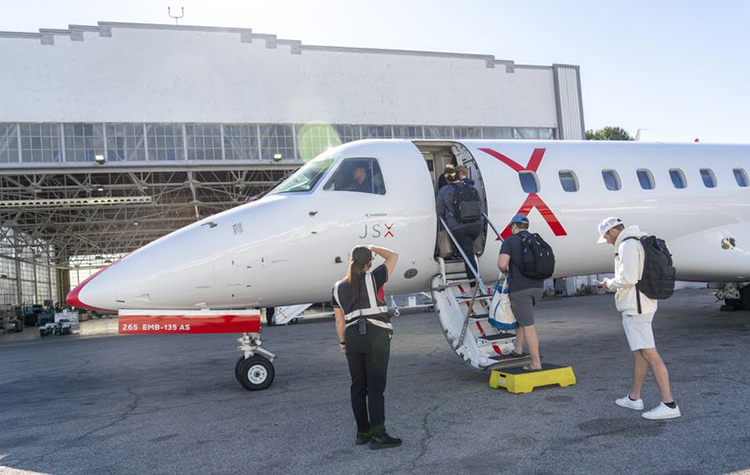
SpaceX demonstrated Starlink in a passenger plane – 100 Mbps for each
SpaceX wants to show the world that its Starlink satellite system can provide access to Netflix and YouTube at an altitude of 9,000 meters above the ground. To do this, the company conducted a test flight with the aircraft of its first client, the regional airline JSX. Journalists from Bloomberg and other publications took part in the flight.
“I’m excited,” said JSX Chief Executive Officer Alex Wilcox, who was aboard a plane over California trying out web surfing and WhatsApp calls. “It exceeded all my expectations.”
Starlink’s in-flight data rates consistently exceeded 100 Mbps, according to the Ookla app. There were about a dozen people on board who were engaged in testing the speed and quality of communication. Additional devices on board simulated the system load of 20-30 passengers.
For comparison, the data transfer rate on board an American Airlines Airbus with Viasat equipment and more than 100 passengers is about 2.2 Mbps.
The short flight from Burbank to San Jose was Elon Musk’s first attempt to take some of the business away from satellite providers Intelsat and Viasat, which serve thousands of planes.
“Is Starlink a serious competitor? Yes, said Jeff Sare, president of commercial aviation at Intelsat, a leading provider of airline wireless services. “However, we do not believe that anyone can defeat us.”
The downside to Musk’s technology is that its small satellites have relatively low bandwidth and may simply not be able to handle the Internet traffic of passengers on large planes in crowded skies or busy airports in major tourist hubs. However, SpaceX says that such pessimistic forecasts do not take into account the speed of development of the system. The undeniable advantages of Starlink include fast signal transmission and the size of the antenna.
The Starlink flat antenna is the size of a pizza box. It is less bulky than the rotary antennas widely used by other satellite providers, so it takes up little space on board. This is of great importance to airlines that use small regional jets, such as Brazil’s Embraer, which flies the JSX.
“The antenna is definitely an advantage in terms of getting commercial in-flight internet contracts for regional aircraft,” said Louie DiPalma, an analyst at William Blair & Co. “Airlines are planning to upgrade old and slow Internet systems on more than a thousand planes in the coming years, and Starlink is the main contender for such contracts.”
US regulators have denied Elon Musk’s company an $866 million government subsidy, citing “underdeveloped Starlink technology.” In response, Starlink says it can handle aircraft of all sizes and points to an agreement with Hawaiian Airlines to service Airbus and Boeing. Regarding the denial of the subsidy, the company said officials were evaluating the data speed at the time of applying for the subsidy, not the speed expected after the entire Starlink network is rolled out.
“The deals with JSX and Hawaiian are a chance for Starlink,” said telecommunications analyst Roger Entner. — This is proof of possibility. Once Starlink technology starts working on JSX, it will gradually start working everywhere.”
According to NSR, a satellite and space industry researcher, about 10,000 commercial aircraft are already equipped with in-flight Wi-Fi systems, and by 2031 the number will exceed 36,000. By 2031, the market is expected to reach more than $7.3 billion in annual revenue compared to $1.9 billion in 2021.

